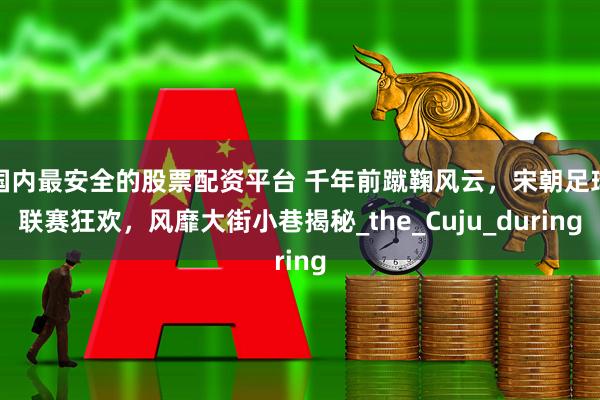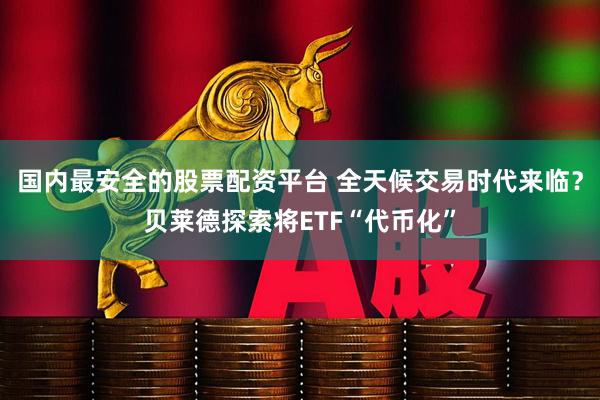
In the bustling fervor of modern football fans cheering for the World Cup, it's hard to imagine that over a thousand years ago, during the Song Dynasty, a similarly thrilling \"football league\" was igniting passions across the land. Back then国内最安全的股票配资平台, the sport known as \"蹴鞠\" (Cuju) had emerged as a popular spectacle, not just a casual pastime but an event rich with organized competition, professional clubs, detailed regulations, and grand tournaments. Cuju in the Song Dynasty shone brightly like a dazzling pearl, illuminating the social landscape and leaving a lasting mark on China's cultural and sporting heritage.
展开剩余92%The Rise of Cuju in the Marketplace
The Song Dynasty was an era of flourishing commerce and urban prosperity, with a growing middle class providing fertile ground for the rise of Cuju. In the vibrant cities of Bianjing and Lin'an, Cuju spread through the streets like a modern-day pop culture phenomenon, becoming a widespread public pastime.
One notable organization, \"Qi Yun Club,\" became the most famous Cuju association of the time, essentially functioning as the \"football club\" of the era. Historical records show that Qi Yun Club operated under a strict organizational structure and admission system. Only those with exceptional skill and good character were allowed to join. Within the club, various roles were designated, such as \"Du Bu Shu\" (team organizers), \"Jiao Zheng\" (coaches), and staff responsible for daily operations. The level of professionalism at Qi Yun Club was staggering, as detailed in the \"Cuju Chronicle.\"
Not just a place for enthusiasts to showcase their talents, Qi Yun Club played a significant role in the development of Cuju as a sport. They regularly hosted various tournaments, with the \"Mountain and Valley Cup\" being the most prestigious. On match days, top Cuju players from across the region gathered, attracting massive crowds of spectators. The event venue was typically an open field in the city, surrounded by makeshift bleachers, with the cheers and roars of the audience echoing throughout. As described in \"Old Stories of Wulin,\" when the competition took place, \"Colorful flags fluttered in the wind, drums and music filled the air, and the streets were empty—everyone gathered for Cuju.\" The excitement matched that of modern major sports events.
Cuju was popular with all social classes during the Song Dynasty. From the royal family to the common folk, everyone had an affinity for the game. Emperor Huizong, Zhao Ji, was an avid Cuju fan who not only loved watching games but also participated himself. Historical texts such as the \"Literature Examination\" recorded how Emperor Huizong would often play Cuju with his ministers in the imperial palace, even promoting players who performed exceptionally well by granting them official titles. The emperor’s enthusiasm for Cuju ignited a court-wide craze, and it became a regular feature at festivals and celebrations.
In the city, the \"Wa She\" and \"Gou Lan\" (performance halls) were popular venues for Cuju performances. Performers would demonstrate impressive skills such as the \"Mandarin Duck Turn\" and \"Swallow Returning to Nest,\" drawing applause from the audience. These performances often charged admission or received tips. Meanwhile, in rural areas, Cuju became the primary form of entertainment during off-season periods. On fields, village squares, and even in the streets, people could be seen kicking the ball around. Children fashioned simple leather balls from cloth and mimicked the adults' moves, passing the tradition of Cuju from one generation to the next.
Cuju's Competitive and Strategic Nature
Cuju during the Song Dynasty was more than just a playful activity; it was a structured, competitive sport with a set of rules that demonstrated the strategic ingenuity of the ancient world. The competition was primarily divided into two forms: \"Bai Da\" (White Kick) and \"Zhu Qiu\" (Ball Building).
\"Bai Da\" focused more on the display of individual skills, similar to modern-day freestyle football. In this event, players didn't need a goalpost. Instead, they used various parts of their bodies—feet, legs, shoulders, and heads—to control, juggle, and perform intricate tricks with the ball. The goal was to show off as many complicated and difficult maneuvers as possible. The \"Cuju Handbook\" recorded the \"Ten Kicks Method,\" which included shoulder, back, waist, knee, and other unique techniques that were not only challenging but also had specific names and standards for execution. These performances were dazzling displays of skill, showcasing both athleticism and artistry.
\"Zhu Qiu,\" on the other hand, was more akin to modern football in terms of competitive play. The game was played with a goal roughly 10 feet high, with a circular hole at its center called the \"Wind Eye.\" Teams, usually consisting of six to sixteen players, competed to kick the ball through the hole. Players worked together using tactics like passing, dribbling, and shooting to breach the opponent’s defenses. The rules, recorded in the \"Shilin Guangji,\" ensured fairness and competitiveness, with penalties for infractions like touching the ball with hands or letting it touch the ground.
Besides the rules, the craftsmanship of the Cuju ball was also notable. Unlike modern footballs, which are made of synthetic materials, the Cuju balls of the Song Dynasty were crafted using animal bladders encased in multiple layers of leather. These balls were carefully processed through techniques like soaking and pounding to ensure they were smooth, elastic, and durable. In Bianjing, there were workshops specifically dedicated to the creation of these Cuju balls, which were described as \"perfectly round, light and easy to kick\" in the \"Tokyo Dream of Hua Lu.\"
In addition to the materials, the training methods for Cuju were advanced. Players used various drills to enhance their skills, such as running with sandbags to strengthen leg muscles and aiming at suspended targets to improve shooting accuracy. Team drills also played a crucial role, with tactical training to foster cooperation and synergy among players. These training techniques contributed to the high level of performance of Song Dynasty Cuju athletes.
A Cultural Legacy
Cuju in the Song Dynasty wasn’t merely a sport—it was an important cultural symbol, filled with historical significance. Many scholars and poets celebrated the sport in their works, contributing to its cultural resonance. The poet Lu You wrote about the vibrant Cuju competitions in his poem, \"Riding through Xianyang as a Youth, Lithe as a Falcon, Leaping like a Butterfly, Watching Cuju with Thousands in the Crowd.\" His words capture the bustling energy and the enthusiasm that surrounded the sport.
In the visual arts, Cuju was often depicted, such as in the \"Hundred Children of Changchun\" by the Song painter Su Hancheng, which shows children joyfully playing the game. These artistic works not only enriched the cultural landscape of the Song Dynasty but also provided valuable insights into the popularity of Cuju in everyday life.
The legacy of Song Dynasty Cuju extends far beyond the era in which it flourished. It remains a cultural treasure of ancient China, influencing not only the evolution of football but also embedding itself deeply in the nation's sporting and artistic traditions. While the form of Cuju may have changed over time, its underlying spirit of competition and cultural richness endures, continuing to inspire modern sports and cultural explorations.
References:
- \"Cuju Chronicle\"
- \"Shilin Guangji\"
- \"Old Stories of Wulin\"
- \"Literature Examination\"
- \"Tokyo Dream of Hua Lu\"国内最安全的股票配资平台
发布于:福建省汇融优配提示:文章来自网络,不代表本站观点。


